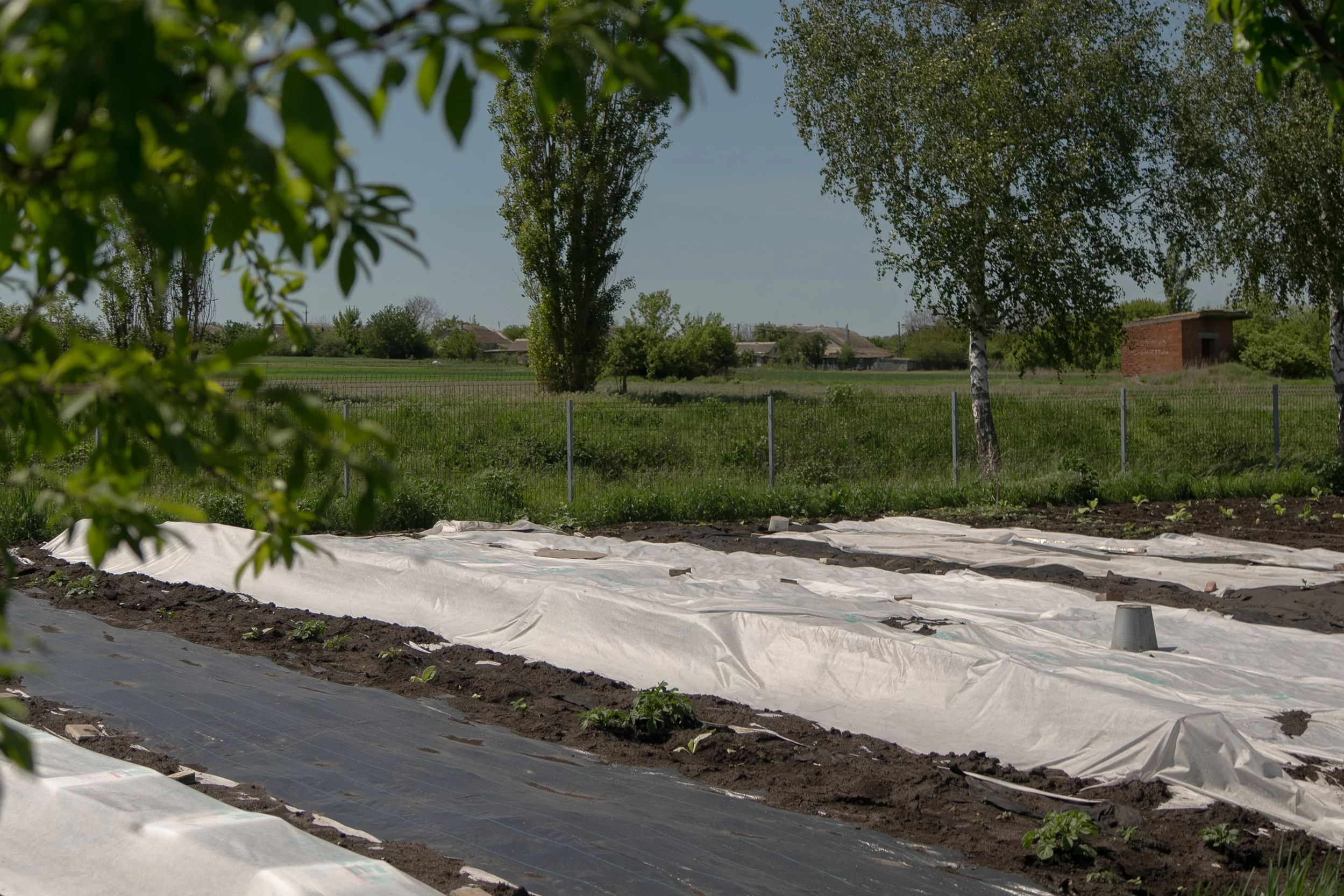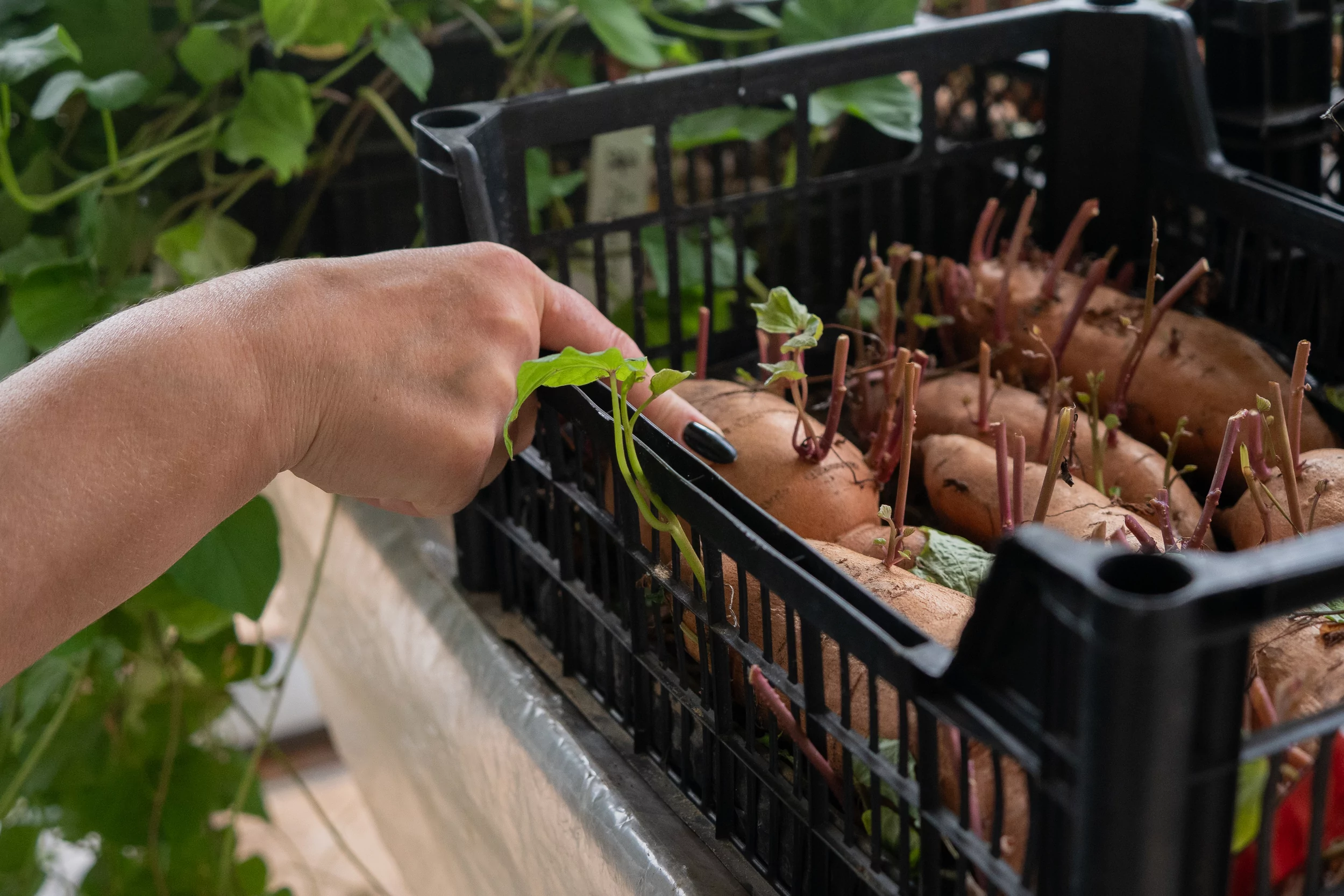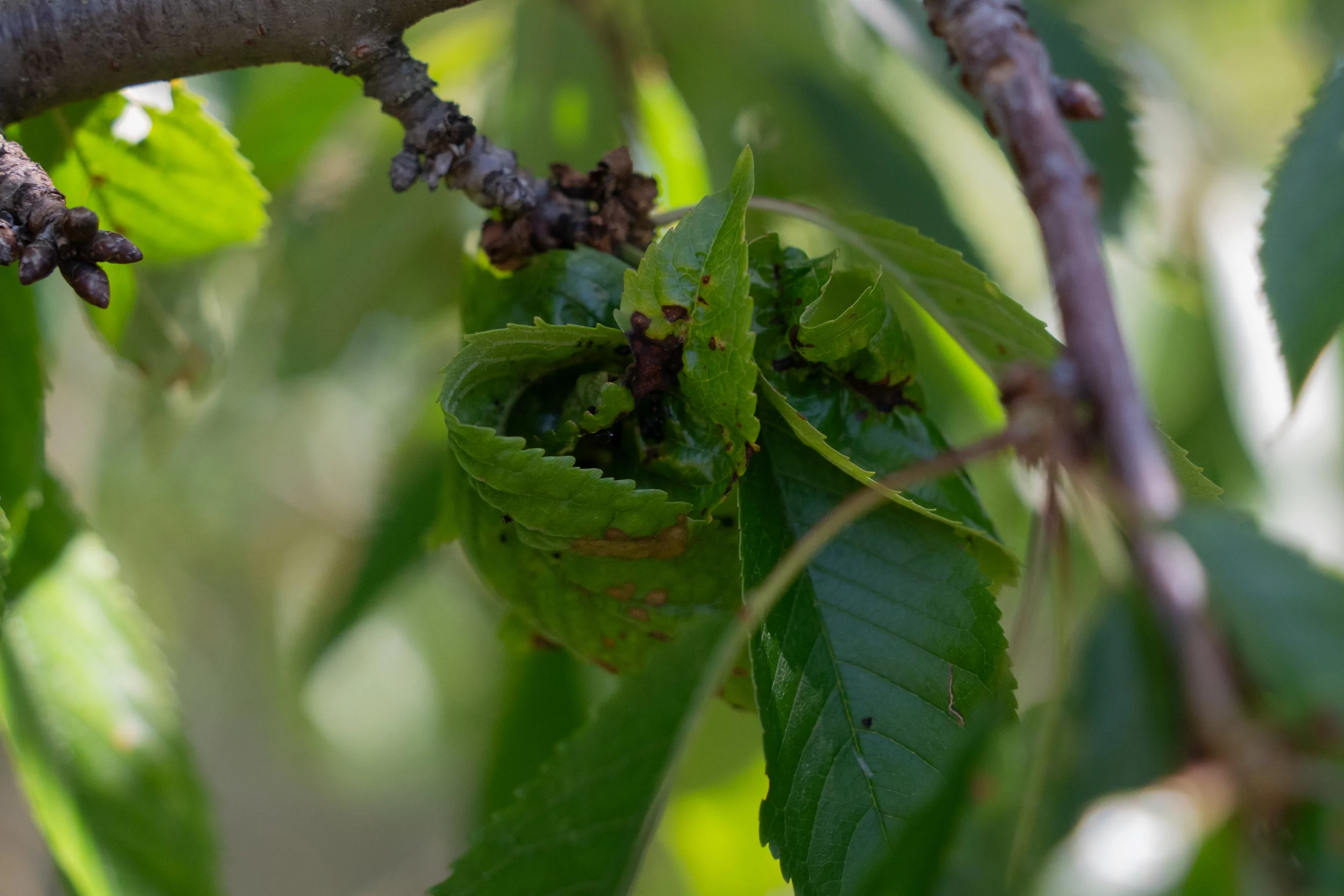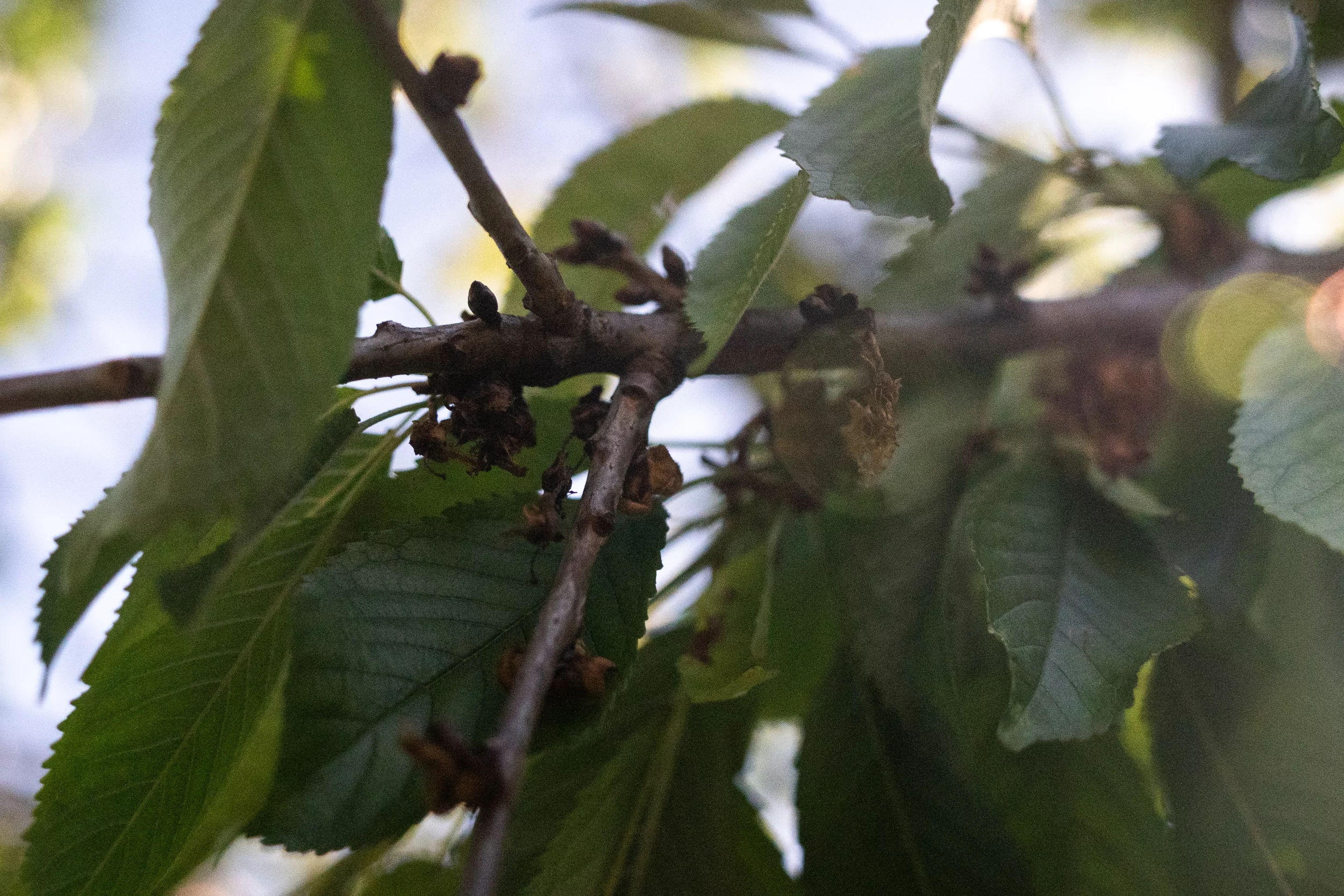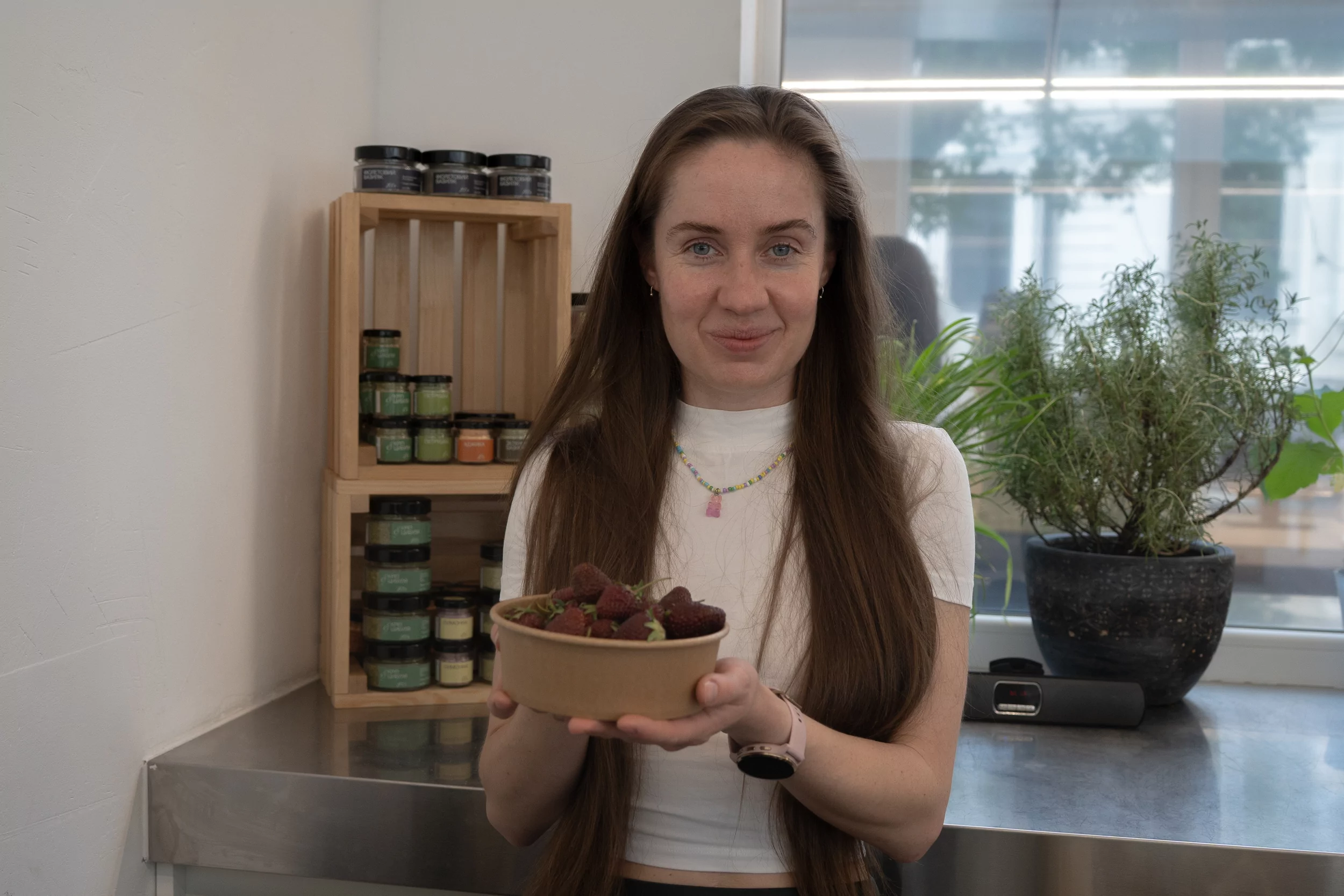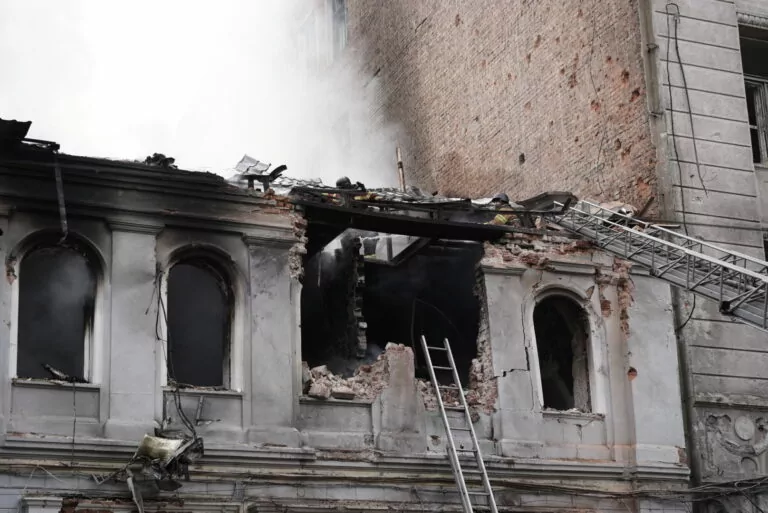UKRAINE, OKHOCHE, KHARKIV, Jun 4 — “This year, the warmth came early, in March. All the plants started growing, and then the frost came. Of course, it had an impact. We lost the fruit harvest, but some vegetables were saved,” said Viktor, a farmer who grows grapes and has a small apiary in Okhoche, a quiet village southwest of Kharkiv.
In the first months of the full-scale war, Russia seized about one-third of Kharkiv, so the beginning of the gardening year went parallel with people adapting to the new, terrible reality. There were many unworked farmlands, Viktor says while driving to his apiary.
“People were afraid to plant anything,” he points to the cultivated fields on the way to the village, “now every piece of land is used. It’s very important — people need to work.”
The weather in the spring of 2025 was unpredictable, so in May, Gwara Media met with those who study agriculture and those who work with the soil — to talk about their challenges and their passions.
The Ukrainian Hydrometeorological Center reported that this year’s growing season in Ukraine began on April 6. From then on, any temperature below 0°C (32°F) was considered “dangerous frost” for crops.
The temperature dropped below freezing twice this spring — in April and May. These sudden cold snaps became a real challenge for everyone involved in agriculture.
“Most plants in our region stop growing if the night temperature drops below 10°C (50°F). If this temperature stays for more than a week, the plants start to die, which means the harvest will not be what we expect,” says Liubov Pylypenko, the senior researcher of the Institute of Vegetable and Melon Growing of the National Academy of Agrarian Sciences (NAAS).
The Institute, with a main building located in the Selektsiine settlement, focuses on creating variants of vegetables that grow well in modern conditions and are resistant to diseases and pests.
In 2022, Russia hit Selektsiine with an airstrike, blowing out the windows in the Institute’s building. Despite the danger, scientists kept working.
This year, in addition to tomatoes, peppers, cucumbers, and ordinary potatoes, typical for the Kharkiv region, they are growing sweet potatoes.
The Institute is also concerned with protecting the crops from the tumultuous weather. Oksana Shabetia, the academic secretary of the Institute, shares their findings:
“Besides installing greenhouses or covering plants with agrofibre, it is important to add fertilizer to keep the seedlings strong enough to survive.”
The more plants that can be saved in this way, she notes, the fewer seedlings will have to be planted again.
Cold and wet weather also spread the fungal infection, so that was another thing scientists worried about.
Shabetia says that Kharkiv Oblast was lucky because the temperature dropped only twice — people had to plant seedlings four times or more in other regions of Ukraine because of constant frosts.
Institute saw the advantages of the temperature shifts, too. Some pests, like aphids, true weevils, and Colorado potato beetles, can’t survive in the cold, so there were less of them this year. Pylypenko adds that the cold helps retain moisture in solids, and the plants need less water.
Even though the frost damaged Viktor’s grape seedlings, he also notices positives in volatile weather. Each cold snap was preceded by warm weather — and everything started to bloom early — so his bees started their early flights, too.
“The April frosts affected fruit trees, of course — there will be no apples, apricots, or pears. But bees gather pollen to survive these cold periods, and now (when it’s warmer) have just started their active phase of work recently. We see delays in nature due to these frosts. I think the harvest peak this year will be much later than usual,” says Viktor, handling the bees.
Volodymyr, a farmer and the owner of another apiary on the way out of the Okhoche, believes that pickling and canning are the best ways to deal with the lack of harvest.
“When I was younger, I couldn’t understand my mother’s passion for canning fruits and vegetables. Even though she was an old woman with no health, we always had hundreds of jars every summer,” he says.
Once, Volodymyr says, fungus infected all the cucumbers in the region. The infection was so severe that some types disappeared for several years, but his family still had many jars with pickles.
“There will be no fruit harvest this year, but there are some preserves at home, and I know that thanks to my mom, we will have fruit anyway,” he said.
To save plants from cold damage, locals at Okhoche tried to use agrofibers, polyethylene films, or simple plastic bottles to cover the seedlings, but it didn’t work. They couldn’t afford to cover the fruit trees to protect them, too.
Now that the temperature has stabilized away from 0°C, they have the opportunity to plant more seedlings, but it’s too difficult and costly to plant new trees. With the weather becoming more unpredictable each year, it’s unknown if Okhoche will have any fruits next season.
Still, locals say that there is no other way to survive without a garden — they are ready to plant vegetables all over again after each frosty night because they “need it.”
“My garden is my safe place,” says Lidiia, one of the locals. Last year, her son-in-law died near Bakhmut, a city in Donetsk Oblast that Russia occupied in 2023. Now, Lidiia and her daughter are managing a huge garden in Okhoche.
“There is a lot of stress in our life, but the land can heal, especially when you take care of it,” she says.
Remote settlements like Okhoche give people the opportunity to focus on their gardens without air raid alerts — the air attacks still happen, but there are no sirens, which creates the illusion of peace.
The village hosts internally displaced people from occupied or frontline regions of the country. Many call the garden their “best medicine,” which distracts them from all the stress and problems.
People in Studenok have also faced cold snaps and lost much of their plants to the weather — but, with their village located just 15 miles from the zero line, they had to try saving the crops with constant Russian attacks on the backdrop and the threat of the second occupation.
“The first thing that catches your eye there is that our farmers grow seedlings in ammunition boxes left over from the Russians. Everything in the village is in use,” Natali Artiushenko says, laughing.
She is a co-organizer of a Deoccupation shop and manager of the Volonterska UA charity that aided farmers in Studenok this year:
“We saved strawberries and potatoes. Our charity foundation brought agrofiber; farmers from the village ordered it. But it was the white agrofibre because the sun passes through it, and everything grows. The garden started to look almost like a small greenhouse.”
Deoccupation shop provides a way for farmers from communities devastated by war to sell fruits and vegetables — and helps them to get back on their feet.
Natali speaks about Dovhenke, another village in Kharkiv Oblast the project works with (Gwara went there several times, including after its liberation from Russians) — it’s still partially polluted with mines and other explosive objects.
She says that even though people can’t properly cultivate the land, they refuse to stop trying and keep working in their gardens despite many threats.
Natali’s also a farmer — and her parents’ summer house is located in Studenok. She often visits them, intending to just lie down and rest, but working with vegetables, fruits, and flowers eventually brings her more pleasure.
“I work in the garden, and I get tired, but there are birds singing and bugs running around — and you see that life goes on. You enjoy it even if you are tired. It is meditation. And it really works, I’ve tested it myself,” says Natali.
Cover photo: Saved strawberry from Studenok / Elza Diachenko, Gwara Media
Read more
- “I’m not afraid to leave my son at home here.” Life after evacuation from Kharkiv region
Hi there! My name is Elza, and I’m the author of this article. Thank you for being interested in the life of the Kharkiv region. Please, consider also supporting our Kharkiv-based newsroom on BMC and/or Patreon.

